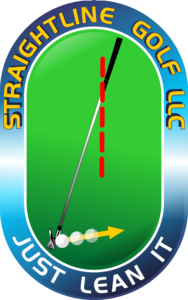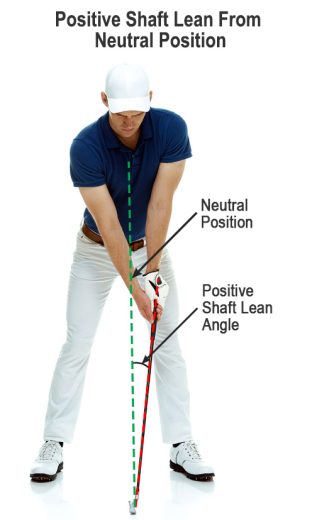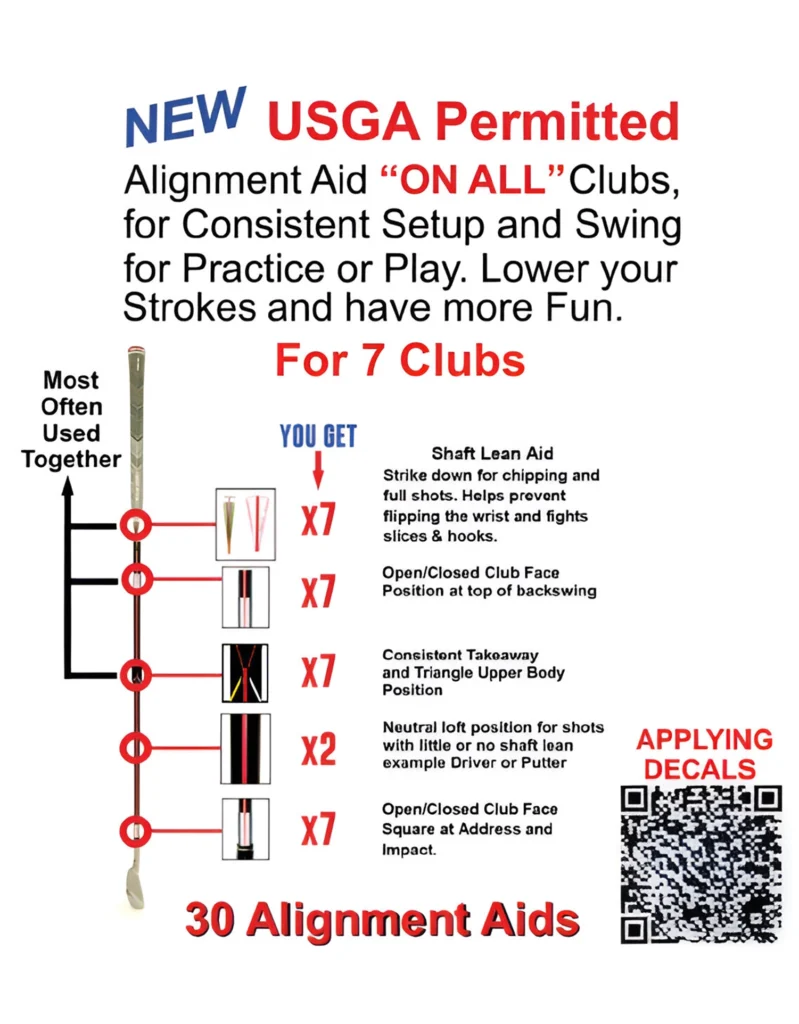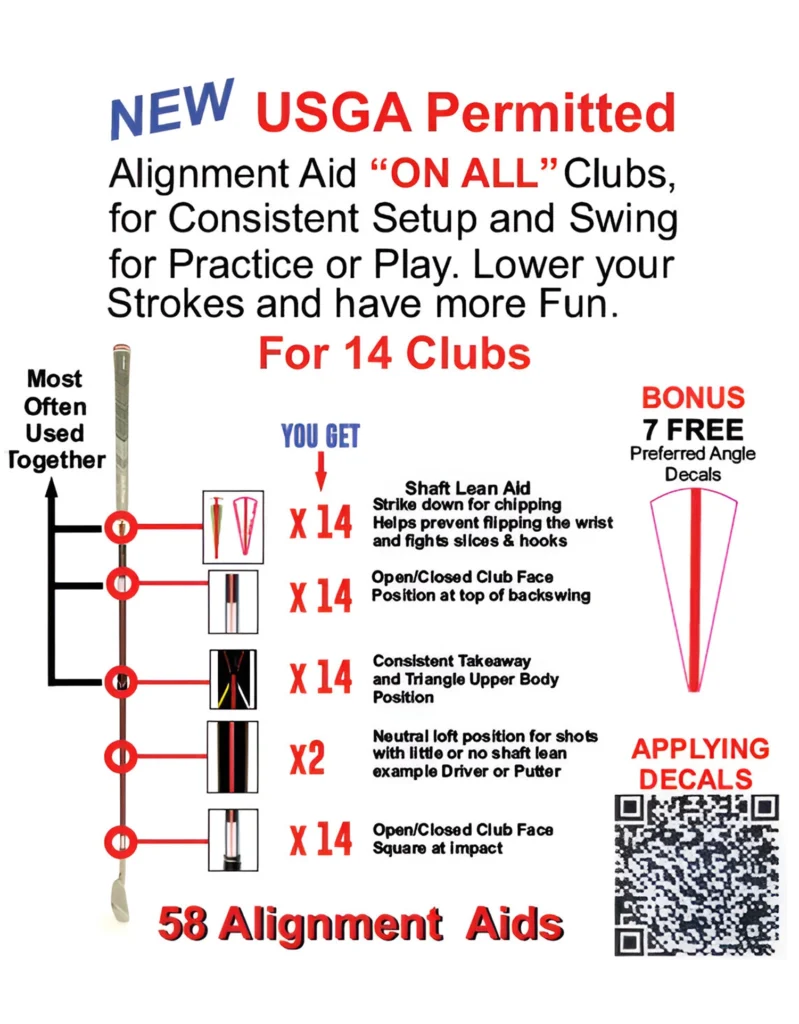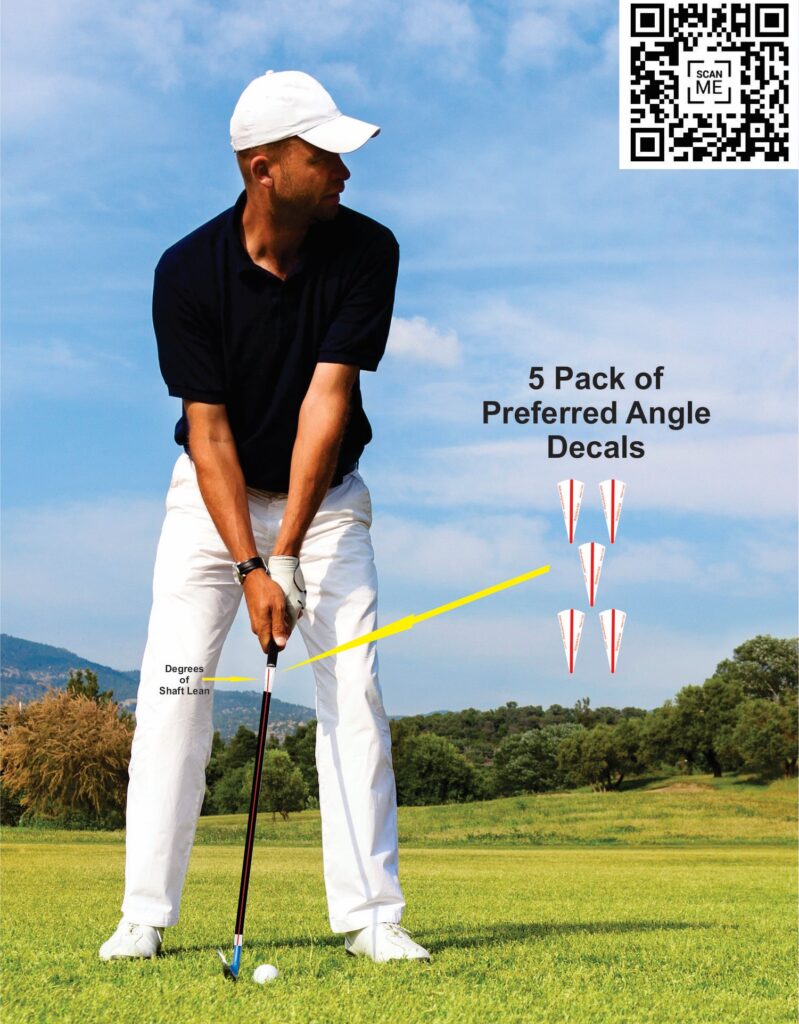0
Cart
Improve Your Game
With Repeatable Shots
Lower Strokes
And Have More Fun On The Course
Lower Your Strokes
SHAFT LEAN IS THE KEY TO LOWERING YOUR STROKES
What is Shaft Lean in Golf?
Shaft Lean is an indicator of how much you press your hands forward or backwards at impact. The angle of the club shaft at impact measures shaft lean (see diagram)
- Forward shaft lean is when your hands were ahead (leaning towards the target) of the golf ball at impact. Forward shaft lean has a positive shaft lean angle.
- Neutral or zero angle shaft lean is when your hands are in line with the ball at impact (neutral position).
- Backward shaft lean is when your hands were behind (leaning away from the target) the ball at impact. A Backward shaft lean has a negative shaft lean angle.
Let’s be honest, the correct golf swing is extremely hard to learn. Unquestionably, shaft lean plays an important role in creating a great consistent swing. Consistent shaft lean affects your entire golfing performance and helps you to lower your golf handicap (see definition below).
How important is forward shaft lean at impact for Irons?
All irons are designed to have a positive shaft lean at impact so you can hit down on the ball and achieve solid contact and plenty of backspin. This allows you to strike the ball, then the ground after the ball. It helps you to stop flipping the club through impact. This will also help build consistency in your low point and bottom of the swing arc forward ahead of the ball.
Having forward shaft lean at impact for your irons allows your hands to stay ahead of the clubhead at impact. This allows the club to be on a downward stroke as it compresses the ball at impact. Hitting the ball higher on the face, giving it height and longer distance. The ideal shaft lean angle of attack is 6-12 degrees of forward shaft lean.
In the game of golf, using forward shaft lean with a wedge is more important than any other club on the course. Wedge shots need lots of forward shaft lean to achieve the sharply downward impact necessary to spin the ball at a high rate. You want to put plenty of backspin on your wedge shots to control the ball once it lands on the green.
Shaft lean is also very important when chipping. You want your hands ahead of the ball to create a forward shaft lean at set-up, so you can hit down on your chip shots aggressively to control the backspin of the ball.
As you improve your golf game, you will increase your positive shaft lean on some clubs. Generally, the more advanced golfer you are, the greater your preferred shaft lean angle (see diagram). To set your new preferred shaft lean angle, only replace the Preferred Angle Decal (can be purchased separately).
Shaft Lean for Putter and Driver
It is more natural for golfers to have no (zero) shaft lean and the neutral shaft lean position may work for putting and hitting drive shots. However, the neutral setup does not create the optimal conditions to send the ball forward with the needed aggressiveness it requires for other golf strokes.
When putting, it is preferable to have a little positive shaft lean with your hand ahead of the ball and maintain that same angle throughout the entire putting stroke.
Backward or negative shaft lean, where the hands are behind the ball, can be used with a driver to hit up on the ball to get height and distance. Keep in mind that it is only a slight backward shaft lean (small negative shaft lean angle).
Other Important Golf Terms
What is Address in Golf?
Address is a term used in golf to describe when the golfer takes their stance and places the golf clubhead behind the ball, preparing to take a stroke on the ball.
What is Club Face Alignment?
Club Face Alignment is the face angle of the clubface at impact and is measured relative to the target line. A positive face angle is when the club face is pointed to the right of the target at impact (“open” for a right-handed golfer) and a negative face angle is when the club face is pointed to the left of the target (” closed” for a right-handed golfer). The club’s face angle is critical at impact when determining the ball flight direction. To hit a straight shot, the face of the club must be square to the ball at impact. The face alignment at impact can vary depending on the type of shot you want to play.
What Is Golf Ball Compression?
The force of the impact of the golf club head compress and flatten a golf ball when making contact with the ball. Golf balls have different compression ratings and the lower the compression rating, the softer the golf ball. Since this impact the behavior of the golf ball at impact, find the compression factor that is just right for your swing speed. The higher your golf club swing speed, the higher the golf ball compression rating that will be ideal for you. (Jim this is only for SEO and is at the bottom of this page if technically correct we should leave it in.)
What Is Golf Handicap?
If you are new to golf or taking round performance more seriously, you need to know what your golf handicap is. Golf handicaps, in plain terms, is a rating system used to measure how good golfers are. A golf handicap is simply a numerical measure that represents the golfer’s ability based on their previous golf round’s scores. Your golf handicap is the number of strokes over par you take on average on an 18-hole golf course. The lower your golf handicap, the more skilled you are better golfer you are. A player with a handicap of 20 means that the average strokes of this player’s previous rounds was 20 over par (depending on the course, around 92 strokes). Most 18-hole golf courses will have an overall par of around 72.
A golf handicap that expresses a golfer’s potential allows players of varied abilities to compete against one another. The intention behind the golf handicap is also to level the playing field. This means that beginners and less skilled golf players can deduct strokes from their overall score, whilst good level players cannot. This does not determine who is the best golfer. It determines who played to a better standard on the day, as compared to their individual skill level (golf handicap).
For more information on Golf Handicap read the FAQs for USGA Implementation of the World Handicap System™ (WHS™) – Click Here.
Products
Special: Buy the 3 FULL SETS combo for 14 clubs for $89.99
© Copyright Straightline Golf LLC 2022. All Rights Reserved.
